Dialogs
Speakonia has several dialogs with distinct purposes. All of these are accessed through the Menu Bar or a shortcut found in the Menu Bar.
Read Webpage
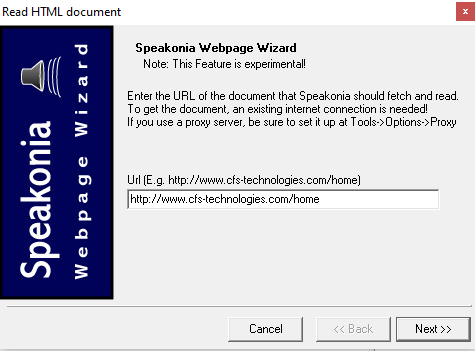
Fig. 1 the Read Webpage dialogue
The Read Webpage dialogue is a single purpose dialogue: When opened, it prompts you for a web address to take the HTML from and attempts to read aloud the contents of that webpage. The next several steps are self-explanatory.
Save to Wave File

Fig. 2 the Save to Wave File dialogue
The Save to Wave File dialogue is simple. You input a filename to export to, or click the [...] button on the right to use a standard file-save dialogue to select a name and destination, and then click export to save Speakonia's reading of whatever text currently exists in the main text area as a .wav file.
Options - General

Fig. 3 the General tab of the Options dialogue
The Options dialogue has two small tabs within itself. The first is General, which contains options to let you alter the appearance of the program by changing the font and color used. This only changes text written in the Main Text Area.
Options - Registration
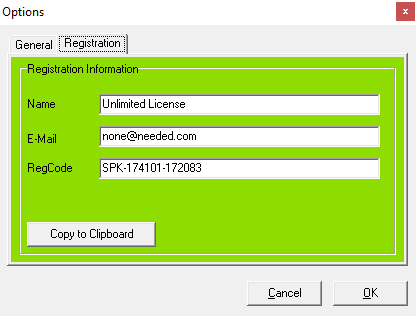
Fig. 4 the Registration tab of the Options dialogue
The other tab of the Options dialogue contains your registration information, if present. It cannot be changed, but can be selected and copied so you can document it elsewhere more easily.
Help
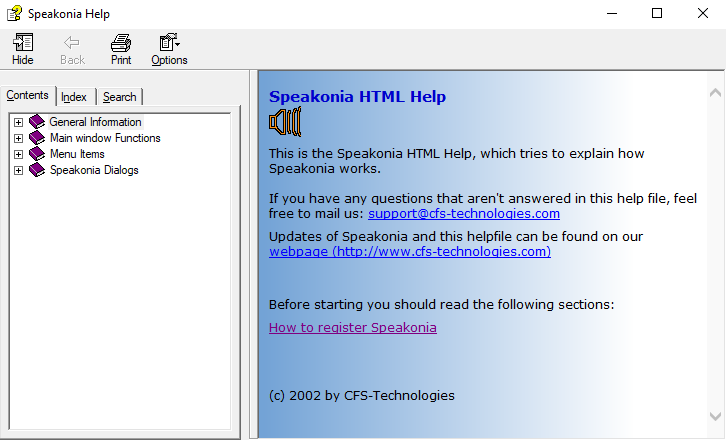
Fig. 5 a working Help dialogue
The Help dialogue contains (or should contain) Speakonia's default Help information. Unfortunately, it is not accessible on all installations due to a heretofore unknown error, hence the existence of this help dialogue.
About
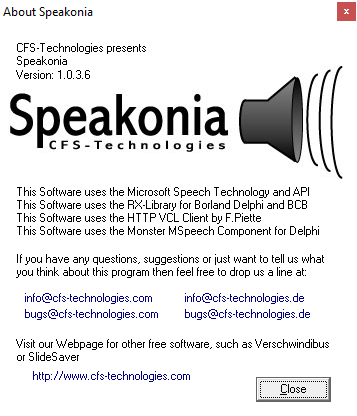
Fig. 6 the About dialogue
The About dialogue has no purpose relating to the rest of the program, and serves only to inform the user about the program, its creation, and where it comes from. Unfortunately, much of the information listed is no longer pertinent, particularly the questions and suggestions email addresses.
TruVoice Pronunciation Manager
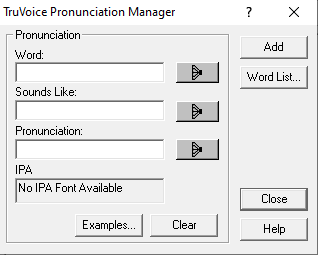
Fig. 7 the TruVoice Pronunciation Manager
This dialog is simpler than it appears. It allows you to add associations between certain words and pronunciations.
What you type in the Word field is what the program will look for and replace the pronunciation of.
What you type in the Sounds Like field is another word you'd like it to sound like; feel free to type nonsense here (and use the test button to the right) liberally to see what best creates the sound you want.
Pronunciation is the text-to-speech language's version of the pronunciation you entered in the Sounds Like field.
When you have two out of three fields filled out (Word and Sounds Like or Pronunciation), you can click Add to add it to the word list. From the word list, you may delete individual pronunciations.